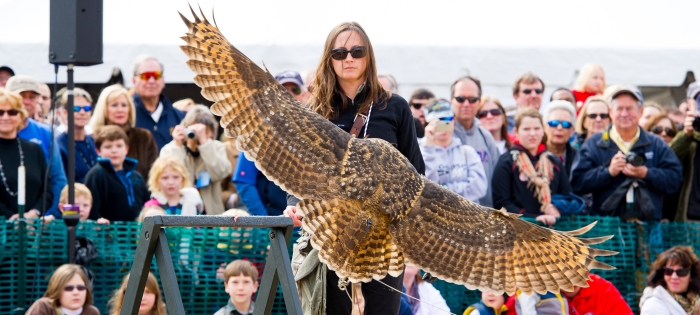
Things To Do
Day Tripping: Check out Charleston’s Center for Birds of Prey
Day tripping is a great way to explore more of South Carolina’s coast during your next Myrtle Beach vacation. If you’re looking for a unique and educational day trip, consider Charleston’s Center for Birds of Prey.
The Birds of Prey center offers an up-close experience for bird enthusiasts and nature lovers with more than 120 permanent birds on display, including a variety of owls, eagles, vultures, falcons and hawks.
Visitors to the center can take a one-hour guided tour of the resident birds, watch a flight demonstration or explore the Owl Wood, a natural setting featuring owls in free flight.
About three times a year, the center hosts “Owl Evenings,” which lets visitors see the owls in free flight in dim light.
The center, which has been a labor of love for Executive Director Jim Elliott and his dedicated troop of volunteers, grew from a small medical center in Elliott’s home to a 150-acre campus over the past couple of decades.
More than 500 injured birds find top-notch veterinary care at the center each year, Elliott said. Common injuries are caused by car accidents, shootings and electrocutions. One goal of the center is to make people more aware of the birds around them.
“We realized fairly quickly that much of what we were seeing could be offset or at least minimized if we just knew [birds] a little better. The educational component came out of that,” Elliott said.
Injured birds are either rehabilitated and released or kept on display at the center, depending on the severity of their injuries.
In addition to educating humans about their effects on birds, Elliott said, he and his staff aim to educate people about what birds mean to us.
Birds are an important part of our ecosystem, Elliott said. They offer a window into what’s going on in the environment, including issues that can affect humans.
“There’s an underlying fundamental basis for what we do,” Elliott explains. “Birds are one of the most valuable environmental monitors that we have.”
More than 75 volunteers at the center contribute 12,000 hours per year, keeping the center running along with a small full-time staff.
The center is open to public from 10 a.m. to 5 p.m. Thursday through Saturday. Tour times are 10:30 a.m. and 2 p.m. Admission is $15 for adults and $10 for children 6-17. Children younger than 6 are free with an adult.


